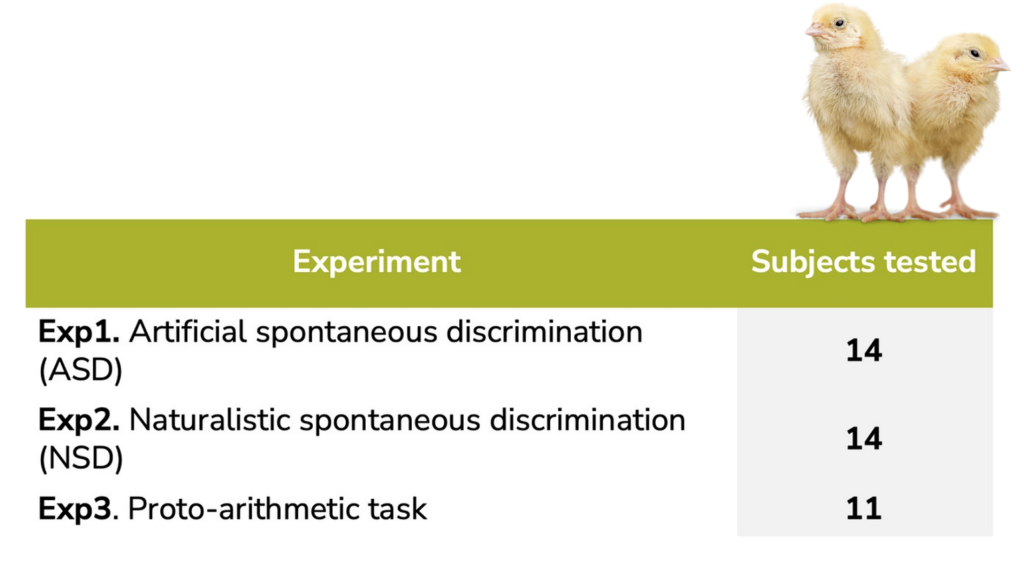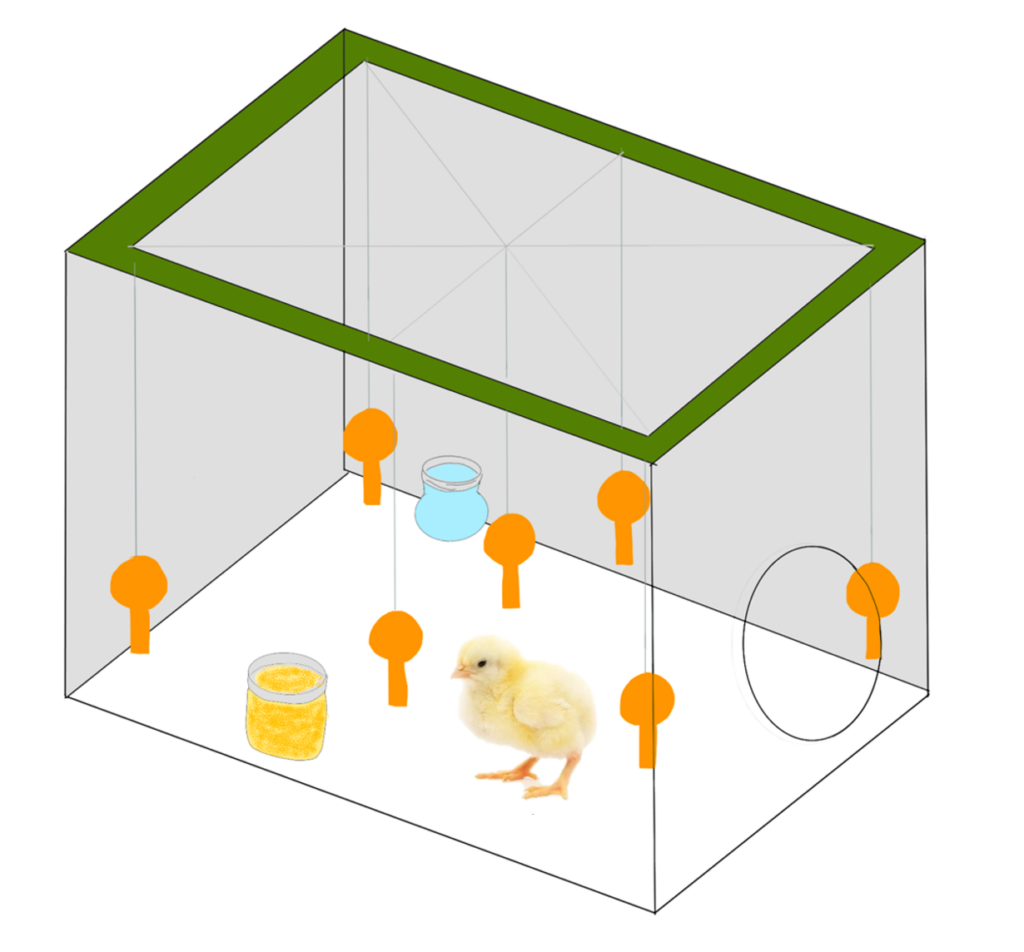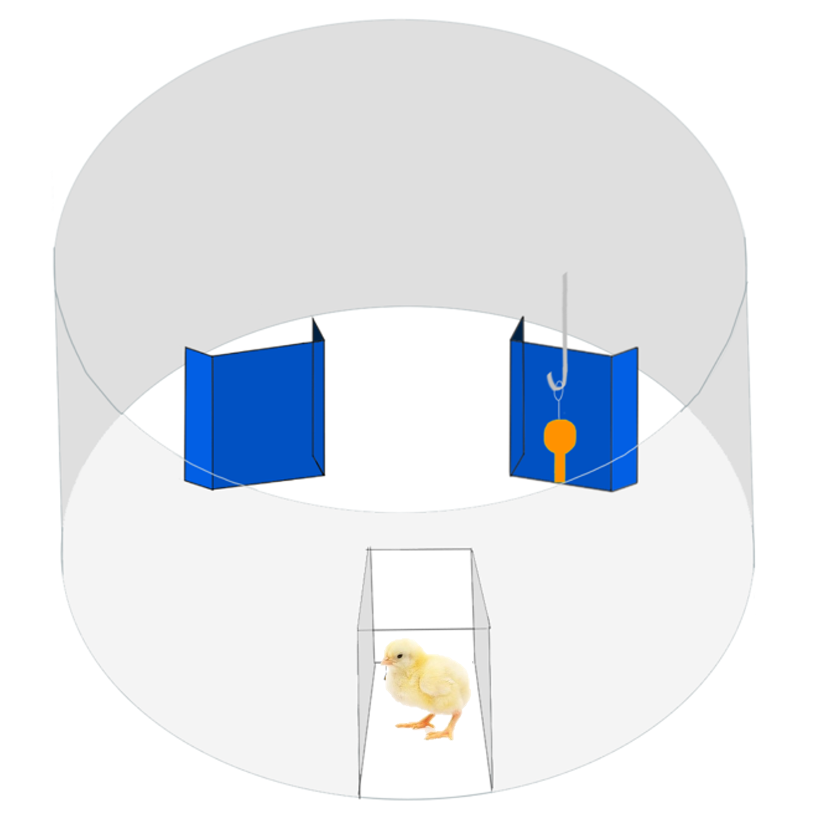The subjects studied were female domestic chicks (Gallus gallus).


The rearing conditions were the same for the three experiments. Each chick was reared individually for the first three days of life with seven identical stimuli. The stimulus the chick was reared with and was later considered as the familiar one, was chosen randomly.
Spontaneous discrimination

It was an unrewarded free-choice test where chicks were left to approach the familiar or unfamiliar stimuli.
The test was a total of six minutes divided in two parts of 3 consecutive minutes each, where the positions of the stimulus of the first part were shifted for the second part to avoid spatial bias.
I scored which stimuli was approached first and the time the chick spent near each stimulus. From this, I could infer whether chicks discriminated or not among the two objects and if they had a preference for the familiar object as expected.
Proto-arithmetic task

- Training session with each chick. It took place in the same arena as for the test, but instead of having two panels, only one was used. The familiar stimuli was used and the training happened until the chick rejoined the stimulus behind the panel for three consecutive times.
- Test. During the test each chick underwent 20 consecutive trials. It was placed in the holding box with three opaque sides and one that had a transparent glass, so that the chick could observe the arena. The arena for the test had two panels. The stimuli were presented in a group of 3 and a group of 4, each of them presented to the chick individually and then hidden in the correspondent panel. The stimuli were randomly assigned to each group and panel. For each trial I scored which set of objects chicks approached.